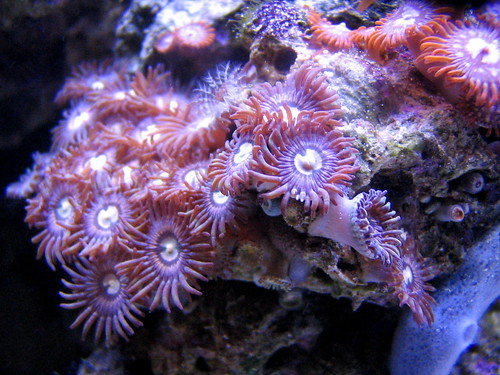 | ||
|
What is
it? Palytoxin is the most poisonous naturally
occurring poison on the face of the planet (1). It is found in the soft coral
of tropical areas of the Pacific Ocean such as Hawaii in “Zoanthids,” as can be
seen above (2)(3).
Where did it come from? There is a legend among Hawaiians which says that many years ago, villagers killed the shark god because he was thought to be responsible for the death of their loved ones. They then strew his parts into the ocean, and it is believed that is where his parts went, sickness followed for any one who went near that ocean pool (4).
What are
its properties? Its chemical formula is C129H223N3O54 (3) which is also the second
How
poisonous is it? Ricin is a very poisonous
substance and is quite well known due to its frequent usage on AMC’s TV series
“Breaking Bad.” If 22 micrograms of it were injected into a rat, there would be
a 50% chance of survival (6). If it were palytoxin to be injected, it would
only require 0.63 micrograms to produce a 50% chance of survival (1). This
means that palytoxin is 35 times more deadly than ricin when injected into a
rat.
What are
the symptoms? High doses can produce poor muscle
control, convulsions, breathing difficulty, and death within minutes (7). The
rapid death is contributed to heart failure.
What to
do? In the very unlikely event that a person was
poisoned with palytoxin, a person would need to be injected with a
vastrodilator almost immediately to prevent the blood vessels from constricting
(8). Call 911.
How does
it work? It works by disrupting the sodium and
potassium pumps which create various concentrations of ions (7). These
concentration gradients are normally used to transport nutrients to the cells,
but without them, many complications occur.
Is
palytoxin useful in any way? Because of the affect
that palytoxin has on the ion pumps in cells, it is used to help understand
those pumps better (9).
References
1. Ramos, V., Vasconcelos, V. (2010). Palytoxin and
analogs: biological and ecological effects. Marine Drugs, 8(7), 2021-2037.
doi:10.3390/md8072021
2. Deeds, J. R., Handy, S. M., White, K. D., Reimer,
J., D. (2011). Palytoxin found in palythoa sp. zoanthids sold in home aquarium
trade. National Center for Biotechnology Information, 4(6), 4. doi:
10.1371/journal.pone.0018235
3. palytoxin. (2011). In The American Heritage Science
Dictionary. Retrieved from http://library.mtroyal.ca:2173/entry/hmsciencedict/palytoxin
4. Vale, C. Ares, I. (2008). Phycotoxins: chemistry
and biochemistry. Hoboken, NJ: Wiley-Blackwell. pp 95.
5. Polytoxin - compound summary. (n.d.). National
Center for Biotechnology Information. Retrieved from http://pubchem.ncbi.nlm.nih.gov/summary/summary.cgi?cid=45027797#itabs-2d
6. Alexander, J., Benford, D., Cockburn, A., Cravedi,
J. P., Dogliotti, E., Domenico, A. D...Verger, P. (2008). Ricin as undesirable
substances in animal feed. European Food Safety Authority.
doi:10.2903/j.efsa.2008.726
7. Botana, L. M. (2010). Seafood and freshwater
toxins: pharmacology, physiology and detection. New York, NY: CRC Press
8. Vick, J. A., Wiles, J., S. (1975). The mechanism of
action and treatment of palytoxin poisoning. Toxicology and Applied
Pharmacology, (32), 2. pp 214-223. http://dx.doi.org/10.1016/0041-008X(75)90026-5
9. Palytoxin. (n.d.). Sigma-Aldridge. Retrieved from http://www.sigmaaldrich.com/etc/medialib/docs/Sigma/Product_Information_Sheet/1/p5183pis.Par.0001.File.tmp/p5183pis.pdf
No comments:
Post a Comment